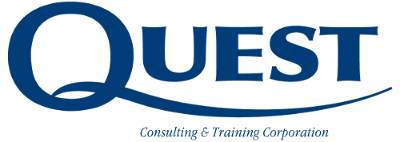Impact On The Organization
Have you ever experienced the effect of poor communication – or no communication – on your own job performance? Imagine the same effect multiplied by all the employees in your organization. Suddenly, you realize the business value of superior professional communication skills. Successful organizations need individuals who know how to lead, direct, support, and coach employees to perform at their best – and all of these skills are built on a foundation of strong communication. Communication Essentials assesses the communication skills of each individual manager and leader, and teaches the critical tools and skills they need to communicate more successfully in all the roles they play.
Learning Objectives
- Identify individual communication issues and problems using the Communication Effectiveness Profile
- Learn how to send clearer messages
- Improve non-verbal communication, and understand its importance in ensuring clarity
- Master and practice a full spectrum of Active Listening techniques
- Recognize three essentials for giving feedback effectively
- Develop a Communication Action Plan
Participants in this module are first shown how to diagram the flow of materials, paper, and decisions in your organization via the use of flow charts. As they clarify actual process flows, they will learn how to identify inefficiencies and inconsistencies, and assess which organizational processes might best benefit from the application of Statistical Process Control (SPC).
This module next introduces participants to SPC and its use in quality control. Participants will learn how quality can be defined, how variations can be studied, how to understand processes in depth, and how to link processes to a deep understanding of customer needs.
Participants will also master essential skills for collecting meaningful data. They will learn about variable and attribute data, random sampling, drawing and check sheets, line and bar charts, and scatter diagrams. Finally, they will explore the best ways to analyze and present the data they have collected. They will create pareto charts, and utilize statistical tools (such as histograms and control charts) that are designed to show normal and common cause variations in manufacturing processes.
Time Investment
Typically 8 hours
Customization
This program can be customized to reflect your organization’s procedures, policies, cases, examples, and terminology. Please inquire about these optional consulting services.
